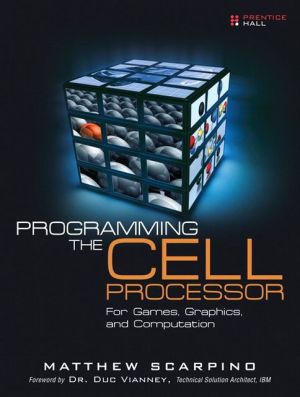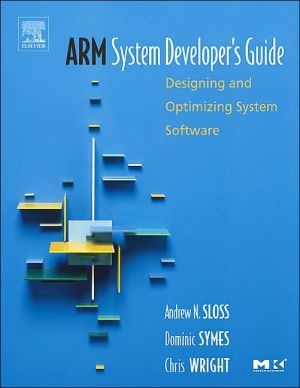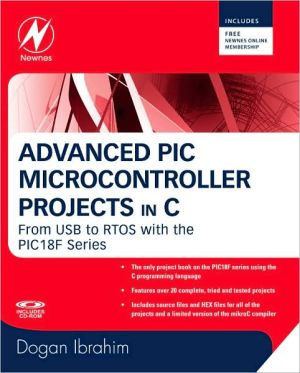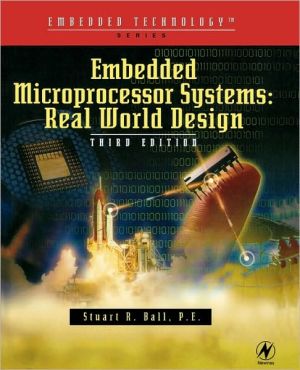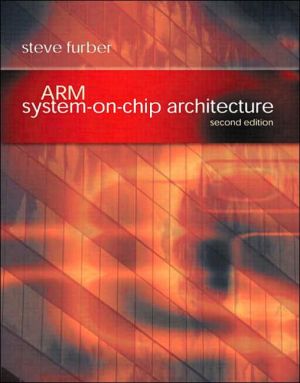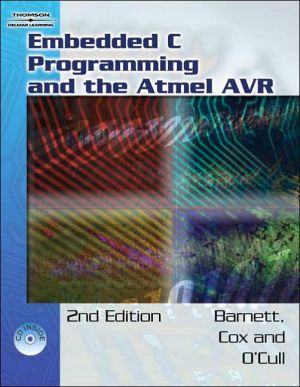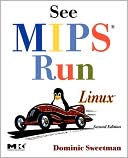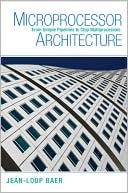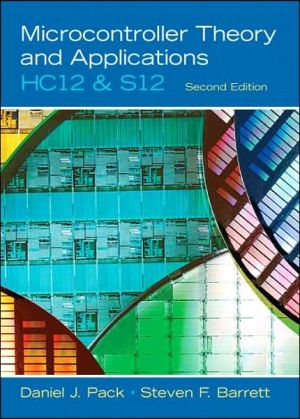Programming the Cell Processor: For Games, Graphics, and Computation
Make the Most of IBM’s Breakthrough Cell Processor in Any Gaming, Graphics, or Scientific Application\ IBM’s Cell processor delivers truly stunning computational power: enough to satisfy even the most demanding gamers and graphics developers. That’s why Sony chose the Cell to drive its breakthrough PlayStation 3 and why Cell processors are at the heart of today’s most powerful supercomputers. But many developers have struggled to create high-performance Cell applications: the practical,...
Search in google:
Make the Most of IBM’s Breakthrough Cell Processor in Any Gaming, Graphics, or Scientific Application IBM’s Cell processor delivers truly stunning computational power: enough to satisfy even the most demanding gamers and graphics developers. That’s why Sony chose the Cell to drive its breakthrough PlayStation 3 and why Cell processors are at the heart of today’s most powerful supercomputers. But many developers have struggled to create high-performance Cell applications: the practical, coherent information they need simply hasn’t existed. Programming the Cell Processor solves that problem once and for all. Whether you’re a game developer, graphics programmer, or engineer, Matthew Scarpino shows you how to create applications that leverage all the Cell’s extraordinary power. Scarpino covers everything from the Cell’s advanced architecture to its powerful tools and libraries, presenting realistic code examples that help you gain an increasingly deep and intuitive understanding of Cell development. Scarpino illuminates each of the Cell’s most important technical innovations, introduces the commands needed to access its power, and walks you through the entire development process, including compiling, linking, debugging, and simulating code. He also offers start-to-finish case studies for three especially important Cell applications: games, graphics, and scientific computing. The Cell platform offers unprecedented potential, and this book will help you make the most of it. Mastering the Cell SDK, including the GCC-based buildchain, ppu-gdb/spu-gdb debuggers, IBM Full System Simulator, andCell IDE Understanding the Cell’s central processing core, the PowerPC Processor Unit (PPU): structure, programming libraries, and AltiVec instructions Programming the Synergistic Processor Unit (SPU): vector processing, communication, caching, assembler coding, and more Leveraging SDK vector and matrix libraries, including the Large Matrix Library, BLAS Library, FFT libraries, Multiprecision Library, and Monte Carlo API Coding basic 2D graphics using the Linux frame buffer Building 3D graphics with the new Gallium OpenGL library Constructing 3D games with Ogre3D and packaging them using Collada digital content interchange Optimizing the performance of your Cell applications Developing on standard PCs and transferring code to Cell systems such as the PlayStation 3 Foreword xv Preface xvii Chapter 1: Introducing the Cell Processor 1 Part I: The Software Development Tools 13 Chapter 2: The Cell Software Development Kit (SDK) 15 Chapter 3: Building Applications for the Cell Processor 35 Chapter 4: Debugging and Simulating Applications 53 Chapter 5: The Cell SDK Integrated Development Environment 83 Part II: The PowerPC Processor Element (PPE) 97 Chapter 6: Introducing the PowerPC Processor Unit (PPU) 99 Chapter 7: The SPE Runtime Management Library (libspe) 125 Chapter 8: SIMD Programming on the PPU, Part 1: Vector Libraries and Functions 153 Chapter 9: SIMD Programming on the PPU, Part 2: Methods and Algorithms 195 Part III: The Synergistic Processor Element (SPE) 217 Chapter 10: Introducing the Synergistic Processor Unit (SPU) 219 Chapter 11: SIMD Programming on the SPU 239 Chapter 12: SPU Communication, Part 1: Direct Memory Access (DMA) 285 Chapter 13: SPU Communication, Part 2: Events, Signals, and Mailboxes 317 Chapter 14: Advanced SPU Topics: Overlays, Software Caching, and SPU Isolation 345 Chapter 15: SPU Assembly Language 367 Part IV: Mathematics and Computation 409 Chapter 16: Vectors and Matrices 411 Chapter 17: The Fast Fourier Transform (FFT) 439 Chapter 18: Multiprecision Processing and Monte Carlo Methods 463 Part V: Graphics and Games 489 Chapter 19: Programming the Frame Buffer: Linux and the PlayStation 3 491 Chapter 20: OpenGL on the Cell: Gallium and Mesa 503 Chapter 21: Building Games with Ogre3D 529 Chapter 22: Packaging Graphics with COLLADA 559 Epilogue 581 Part VI: Appendices 583 Appendix A: Understanding ELF Files 585 Appendix B: Updating the PS3 Add-On Packages and Installing a New Linux Kernel 609 Appendix C: The Accelerated Library Framework (ALF) 617 Appendix D: SPU Instruction Set Reference 649 Appendix E: A Brief Introduction to Tcl 661 Index 669
ForewordForeword\ The Cell Broadband Engine Architecture (Cell/B.E.) defines a new processor structure that extends the 64-bit Power Architecture technology and incorporates unique features that support critical real-time response of highly parallel, computationally intensive code. The first implementation of the architecture has resulted in a single device of heterogeneous processors mixed with simultaneous multithreading and special computational "accelerator" cores for more performance and efficiency gains. The processor comprises a vector Power Processor Element (PPE) with two levels of cache and eight independent Synergistic Processor Elements (SPEs), each with its own multilevel storage organization. In addition to processor-level parallelism, each processing element has Single Instruction Multiple Data (SIMD) units that can process from 4 words up to 16 characters per processing cycle, and globally consistent Direct Memory Access (DMA) engines that provide a rich set of DMA commands for seamless communication between all Cell/B.E. processing elements. The dual thread, 64-bit PPE controls and runs the operating system, manages system resources, and coordinates work sent to the SPEs, while the SPEs are dedicated only to the compute thread and its data.\ Although the Cell/B.E. processor was initially intended for application in game consoles and media-rich consumer-electronics devices, a much broader use of the architecture is starting to emerge to handle streaming workloads found in today's applications across such industry segments as health care, life sciences, petroleum exploration, financial services, digital media, electronics, government, andeducation. To fully harness the power of Cell/B.E., developers need to use different programming models and to write multithreaded code that ensures the SPEs are well utilized and work is equally off-loaded across the SPEs.\ This book is the first commercially published book written for those who want to program the Cell/B.E. It provides comprehensive learning material for developing multithreaded code that allows an application structured for parallelism to execute much more efficiently on those SPE accelerators. It starts with the IBM Software Development Kit (SDK) for Multicore Acceleration Version 3.0, which consists of run-time tools (such as the Linux kernel), development tools, GNU toolchain, software libraries and frameworks, performance tools, a system simulator, sample source codes and benchmarks—all of which fully support the capabilities of the Cell/B.E. The book discusses the device's architecture, including the PPE vector processing unit, SPE SIMD capabilities, and DMA communication mechanisms. The book also details SPU programming and exploitation of SPU storage by software module overlay and software managed cache. It includes an in-depth section on libraries, ranging from the basic vector and matrix libraries to BLAS, MASS, FFT, and Monte Carlo libraries.\ Multicore processing is the future trend of the computing industry. Cell/B.E. offers a general-purpose, programmable multicore processor available to developers through high level programming languages such C/C++ and Fortran. However, in order to fully leverage the processor parallel capabilities, the application needs to be properly designed in both code and data. This book describes the processor in enough details and contains many practical code examples to get you off the ground to write your first Cell/B.E. application. Such experience should give you a competitive edge when working with other multicore systems, or as a foundation to work on Cell/B.E. homogeneous and/or hybrid clusters that are being deployed to support a wide range of high performance computing workloads.\ Duc J. Vianney, Ph. D.\ Technical Solution Architect1\ Education Lead—Cell/QUASAR Ecosystem & Solutions Enablement\ IBM Systems & Technology Group, Industry Systems Division\ ***\ 1What is the IBM definition of "Technical Solution Architect"? "This role assumes overall technical responsibility for the success of solution construction, implementation, and system integration in a technology, industry, or business specialty. They deliver new and complex high quality solutions to clients in response to varying business requirements. They utilize in-depth knowledge of leading-edge products and technology in conjunction with industry and business skills to influence clients."\ ***\ \ \ © Copyright Pearson Education. All rights reserved.
Foreword xv Preface xvii Chapter 1: Introducing the Cell Processor 1 Part I: The Software Development Tools 13 Chapter 2: The Cell Software Development Kit (SDK) 15 Chapter 3: Building Applications for the Cell Processor 35 Chapter 4: Debugging and Simulating Applications 53 Chapter 5: The Cell SDK Integrated Development Environment 83 Part II: The PowerPC Processor Element (PPE) 97 Chapter 6: Introducing the PowerPC Processor Unit (PPU) 99 Chapter 7: The SPE Runtime Management Library (libspe) 125 Chapter 8: SIMD Programming on the PPU, Part 1: Vector Libraries and Functions 153 Chapter 9: SIMD Programming on the PPU, Part 2: Methods and Algorithms 195 Part III: The Synergistic Processor Element (SPE) 217 Chapter 10: Introducing the Synergistic Processor Unit (SPU) 219 Chapter 11: SIMD Programming on the SPU 239 Chapter 12: SPU Communication, Part 1: Direct Memory Access (DMA) 285 Chapter 13: SPU Communication, Part 2: Events, Signals, and Mailboxes 317 Chapter 14: Advanced SPU Topics: Overlays, Software Caching, and SPU Isolation 345 Chapter 15: SPU Assembly Language 367 Part IV: Mathematics and Computation 409 Chapter 16: Vectors and Matrices 411 Chapter 17: The Fast Fourier Transform (FFT) 439 Chapter 18: Multiprecision Processing and Monte Carlo Methods 463 Part V: Graphics and Games 489 Chapter 19: Programming the Frame Buffer: Linux and the PlayStation 3 491 Chapter 20: OpenGL on the Cell: Gallium and Mesa 503 Chapter 21: Building Games with Ogre3D 529Chapter 22: Packaging Graphics with COLLADA 559 Epilogue 581 Part VI: Appendices 583 Appendix A: Understanding ELF Files 585 Appendix B: Updating the PS3 Add-On Packages and Installing a New Linux Kernel 609 Appendix C: The Accelerated Library Framework (ALF) 617 Appendix D: SPU Instruction Set Reference 649 Appendix E: A Brief Introduction to Tcl 661 Index 669
